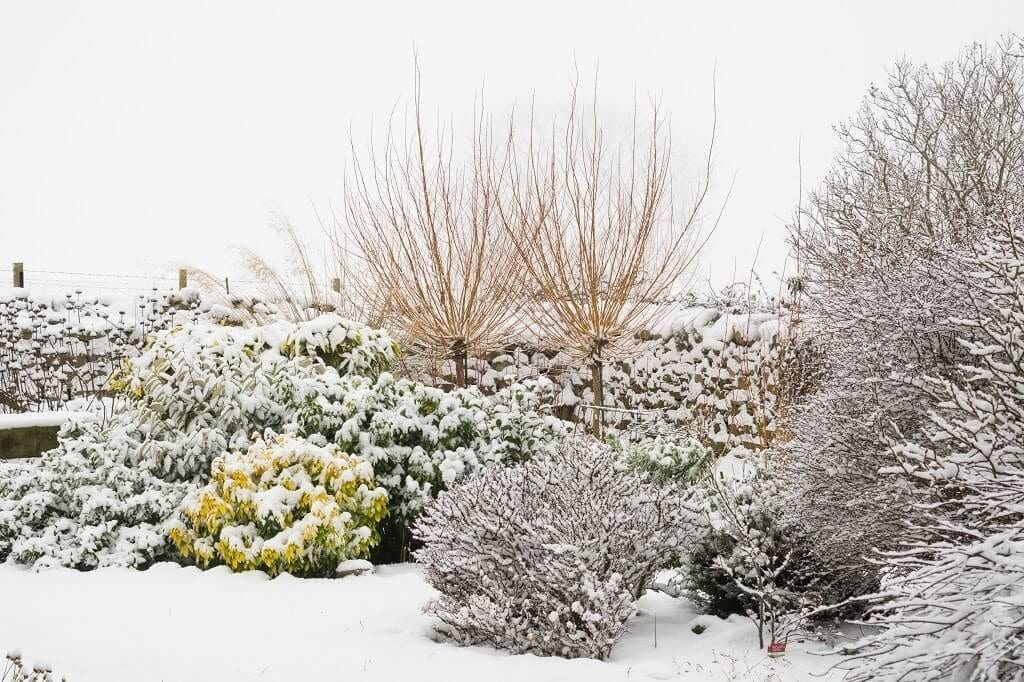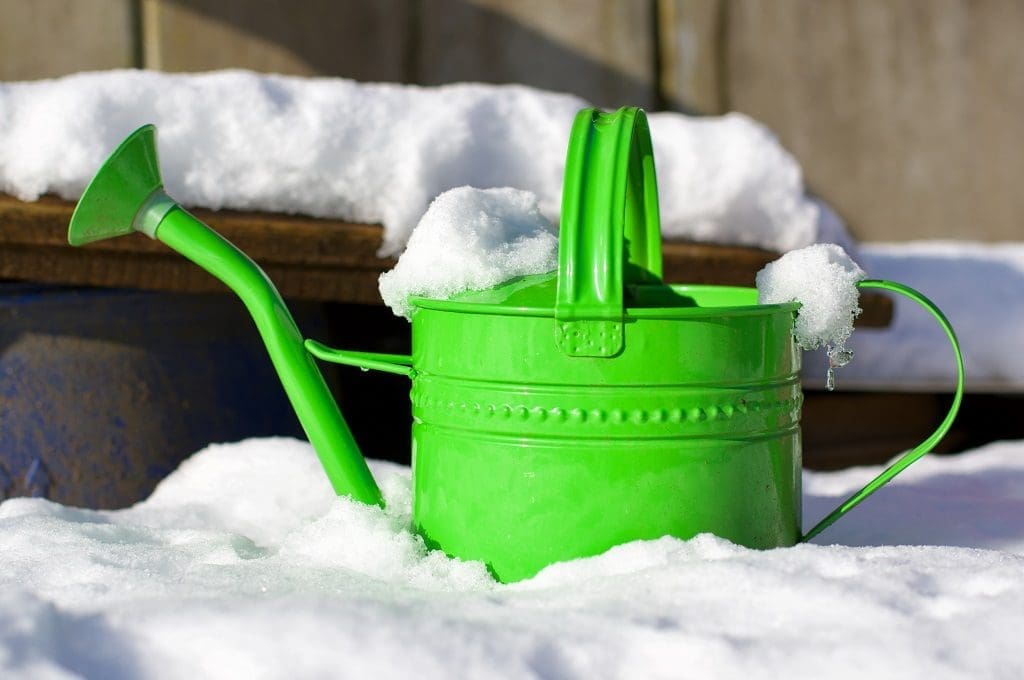Your tree may have lost its leaves and stopped producing flowers, but that doesn’t mean it doesn’t need your attention in the winter.
While trees remain dormant in the winter, keeping them strong, hydrated, and healthy is key to ensuring they come back in full bloom in the spring. The winter season, with its cold and dry effects, can do a number on your trees as a lack of water can cause long-term damage. You may not see it now, but your trees are likely feeling the pain of this cold weather.
To ensure the longevity of your trees, no matter how harsh the winter gets, our team at Earth Development has everything you need to know.
Do Dormant Trees Need Water?

So, do dormant trees need water? Actually, they do!
While your dormant trees may not be brimming with life, with their leaves gone and flowers nowhere in sight, they still need oxygen and water to keep their root system strong. While the exterior appearance of the tree is dormant, the roots are always working.
The dry and cold soil in the winter has insulating properties that work to protect the tree’s root system. However, if the soil is dry, it will freeze easier, killing the tree roots near the surface. These are the roots that are essential to providing a tree with water and nutrients, and without them, a tree will struggle.
For this reason, it’s important to keep watering trees in winter temperatures, ensuring that the roots have what they need to keep the tree alive.
Common Trees That Need Winter Watering
Should you water trees in the winter? We know the answer is yes. But you may be wondering – “all of them?!”
At the end of the day, all trees need water to keep them alive. However, some specific types of trees need that supplemental water to thrive. Newly planted trees need extra attention, but so do a few others.
To ensure the health of your trees, you’ll want to get into a winter watering routine with these types:
- Evergreens
- Lindens
- Alders
- Willows
- European white and paper birches
- Spruce
- Fir
- Dogwoods
- Yew
- Maples
- Hornbeams
- Mountain ashes
- Boxwood
- Arborvitae
- Manhattan euonymus
- Oregon grape-holly
To protect trees in the winter months, particularly those on this list, a little extra water can go a long way.
Watering Newly Planted Trees in Winter

Watering newly planted trees in winter temperatures is a must. These newly planted (those that have been planted in the last 1-3 years) or young trees are more susceptible to drought due to their limited root system, causing dry soil to cause immediate effects.
To keep your new trees strong, you’ll want to keep them hydrated early, starting to amp up their water intake in the summer and fall until the ground freezes. Once it hits winter, you can water them every few weeks, whenever there’s no snow. We recommend watering them three times a month in the fall and around two times a month in the winter to ensure they thrive into an established tree.
Watering Evergreens in Winter
Another highly susceptible tree is the evergreen. These trees lose their needles due to the dry air in winter and will sometimes lose them at a faster rate than their roots absorb water. For this reason, it’s extra important that you continue watering evergreen in winter temperatures so that they have an ample enough water supply as the air continues to get drier.
Whenever there’s a warm spell, and with consistency throughout the winter, you’ll want to restore the evergreens water supply. We know – it may seem silly considering it has already lost its needles, but this can make a world of difference in protecting the tree in the long run.
How to Water Trees in Winter: Tips and Guidelines
When it comes to watering trees in winter, there are a few considerations to make sure your trees get what they need. As a basic guideline, we recommend watering from late fall through early spring. If you’re getting a lot of rain, this won’t be as necessary, but in those really cold months, a good winter watering routine is key.
To protect trees in the winter months, we recommend:
- Watering from October through March.
- Only watering when the temperature is above 40 degrees Fahrenheit and there’s no snow or ice on the ground around your trees.
- Use a “low and slow” watering method to ensure that the water has time to sink into the soil.
- If you can, water deeply with a soaker hose.
- Irrigate around noon since the soil will be the warmest and will best absorb water.
- Do not spray the foliage with water, especially with trees like evergreens.
- Dry soil won’t absorb the water immediately, so set ample time for it to absorb – you’ll want the water to get at least a foot deep!
- Water plants in windy locations more.
Watering in the winter doesn’t have to be complicated, and with these simple guidelines, you can maintain the health of your trees.
How Often Should I Water Trees in the Winter?
So, how often do you water trees in the winter? There’s no real set-in-stone timeline. You’ll want to just pay attention to the weather – has it been colder recently? When’s the last time it rained? The weather is the guide here.
If it rains and then immediately snows, you don’t necessarily need to rush to water your trees. However, if it rains and then there’s a cold and dry wave of weather, your trees will need some extra love.
Keep in mind that the bigger the tree, the more water it requires. We typically follow the rule of 10 gallons per inch of the diameter of the tree trunk!
Additional Winter Protection from Dry Conditions

If you’re looking for one more tip for helping your trees withstand the winter temperatures, we have a simple answer: mulch.
Mulch is an incredible way to prepare trees for the cold months. This easy-to-apply protection can help prevent moisture loss, as well as aid in regulating soil temperature through the winter.
When it comes to using mulch to protect trees in winter, we recommend:
- Layering about 2 to 4 inches of mulch around the base of trees.
- Spread it as far as the drip line for trees.
- To avoid a “mulch volcano,” keep all mulch a few inches away from the trunk’s base.
Mulch is a simple solution but can make a big difference. Don’t skip it!
Conclusion
To enjoy your trees through all the seasons, it’s important to keep them healthy and strong. This is particularly important in the colder months, but by watering trees in winter, you can ensure your foliage is back and better than ever come March.
If you’re looking for some advice on how to keep your trees healthy or are hoping a team of experts can take on the task of maintaining a tree’s strength, our experts at Earth Development are happy to help. To speak with our experienced team, give us a call at 920-406-7501 today.
